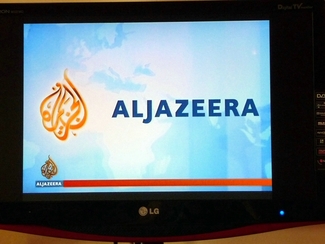| | content is provided to consumers, but you would be hard-pressed to pinpoint any of those changes. Cable TV is pretty much the same today as it was 33 years ago when I first signed up as a college student. You pay a monthly fee and receive the channels the company provides, even if you never watch a lot of them. Maybe you only want ESPN and the History Channel. Too bad, you have to pay for 30 or 40 other channels whether you like it or not. Sen. John McCain, R-Ariz., wants to nudge the market along a bit. He has introduced a bill that would provide regulatory incentives to cable companies that unbundle their programming and allow people to pick and choose the channels they want. (Read a USA Today account about it here.) (Read McCain’s L.A. Times op-ed about it here.) Observers say the bill hasn’t a snowball’s chance in Phoenix. The cable industry’s lobbyists are too powerful. Those lobbyists and industry leaders, for their part, say consumers would end up having to pay even more if they could choose only a select few channels, and the less popular channels would go out of business. That might mean fewer educational programs. Well … I haven’t paid for cable television in years. I own a set-top box, from a brand I won’t name, that provides me with streaming programming over the Internet. I pay separately for the Major League Baseball package, for Netflix and for Hulu. Several other channels are provided for free, presumably because of advertising support. I can stream news reports from the BBC or Al Jazeera. When news breaks, however, I have a variety of Internet sources to turn to on my laptop or iPhone. I feel I have a lot of control over what comes into my home, but I can’t get ESPN or other popular programming, probably because of those networks’ contracts with cable providers. If market forces really are going to push change, it will come only when large groups of people abandon their cable packages and switch to services such as the one I use. But they won’t do that unless those services provide comparable programming. That seems to be McCain’s point. It would be interesting to see what a television landscape responsive to pure market forces would look like. |
|
1 Comment
10/16/2013 03:59:56 pm
It is a well executed post. I like the diagram most. It is a helpful informative post. Thanks for sharing this great information.
Reply
Your comment will be posted after it is approved.
Leave a Reply. |
Search this siteLike what you read here? Please subscribe below, and we'll let you know when there is a new opinion.
The author
Jay Evensen is the Opinion Editor of the Deseret News. He has more than 40 years experience as a reporter, editor and editorial writer in Oklahoma, New York City, Las Vegas and Salt Lake City. He also has been an adjunct journalism professor at Brigham Young and Weber State universities. Archives
July 2024
Categories
All
Links
|


 RSS Feed
RSS Feed

